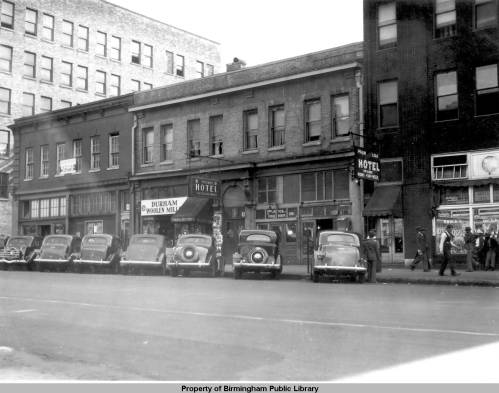As one does now and then, I was recently glancing through Zora Neale Hurston: A Life in Letters, collected and edited by Carla Kaplan and published in 2002. So what should I find but a letter with an interesting Alabama connection. Let's investigate.
I'm not going to say much about Hurston, who's life and career are well known. Her entry in the Encyclopedia of Alabama will give you the basics. Although born January 7, 1891 in Notasulga, she and her family soon moved to Eatonville, an all-black town in Florida. During the course of her life, she worked at odd jobs, wrote stories and essays, and did folklore field research in New Orleans, Florida, and Alabama. In the 1950s, she had a connection with another Alabama author, William Bradford Huie. See the Encyclopedia article for more details.
Hurston's final decade were filled with financial and health worries, and after moving back to Florida she worked as a maid. After a stroke in 1959 she entered a nursing home and died there on January 28, 1960. She was practically forgotten despite her substantial research and publication records. Author Alice Walker located her unmarked grave and published an article in 1975 that revived interest in Hurston's work.
William Stanley Hoole [1903-1990] had a long career as librarian and historian. Born in South Carolina, he finished his doctorate in English at Duke University and then taught first at what is now Jacksonville State University and then Birmingham-Southern. He left there for Baylor University and then what is now the University of North Texas,. In 1944 he became director of libraries at the University of Alabama, a post he held for 27 years. During that time he led tremendous growth of the libraries and archives there; the special collections were named after him in 1977.
Hoole wrote or edited 50 books, over 100 articles and numerous book reviews. His career encompassed significant achievements in the fields of both librarianship and history. He helped establish the Alabama Historical Association and edited its journal from 1948-1967. Subjects of his writing ranged from aspects of librarianship to Confederacy topics.
He seems to have written Hurston and other authors inquiring about their current projects and asking for a paragraph describing them. I've yet to determine if these were collected in any of his publications.
Hurston writes from New York City on March 7, 1936, to Hoole at Birmingham-Southern College. Her first paragraph is an explanation and apology. "I think I must be God's left-hand mule, because I have to work hard. That's very funny too, because no lazier mortal ever cried for breath. But the press of new things, plus the press of old things yet unfinished keep me on the treadmill all the time." Thus she hasn't answered his "kind and flattering letter before now."
The project Hurston describes is Their Eyes are Watching God which was published the following year. Then she tells Hoole, "I am glad in a way to see my beloved southland coming into so much prominence in literature. I wish some of it was more considered. I observe that some writers are playing to the gallery."
As she ends her letter Hurston describes some of the southern authors she admires, such as Erskine Caldwell, who wrote numerous novels including God's Little Acre, and Carl Carmer for his work Stars Fell on Alabama. She gives special praise to an Alabama writer. "T.S. Stribling is a monnyark, that's something like a king you know, only bigger and better. I love him."
Stribling wrote 16 novels and numerous articles and short stories. A trilogy of novels was set around Florence from antebellum times into the twentieth century; one of those, The Store, won a Pulitzer Price for fiction in 1933.
Her final words? "P.S. I come of an Alabama family. Macon County."






















































